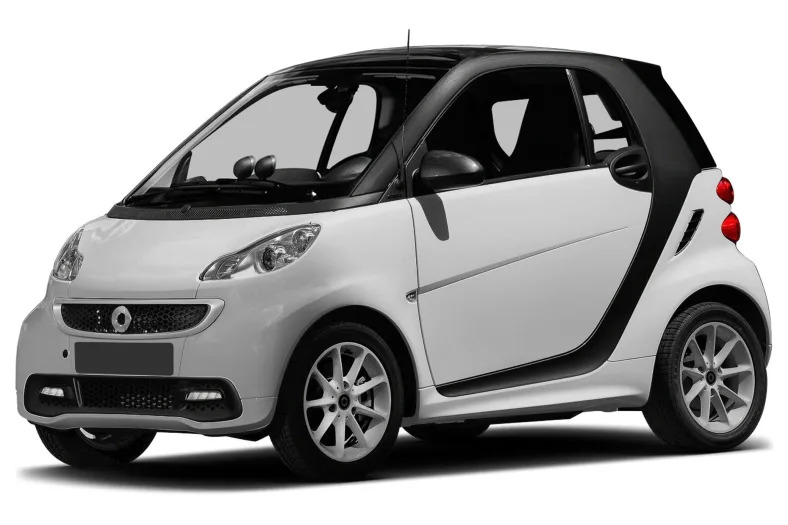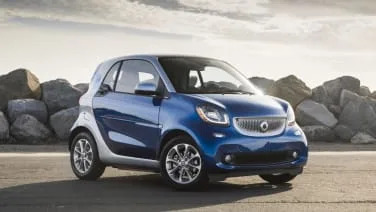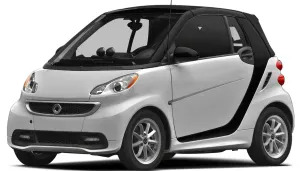2013 smart fortwo electric drive
Little Daimler Child Finally Nails It With Electrons Since the official launch of the Smart Fortwo in October 1998, the little company within Daimler has never made a profit. Far from it. Not for lack of trying, certainly. Many of us know well the story of myriad attempts to force the world to adopt the Smart way of living in the automotive sense, only to have the various chapters conclude in a disillusioning crash and financial burn. Smart is still trying desperately to find its proper path as a global player that sells rather well – and not just in London and a few Italian and German cities. They insist that China is the great frontier nowadays for the Fortwo in all of its trims, and they still want to figure out North America. Is electricity the only way to force the breakthrough? We drove the previous generation Smart Fortwo Electric Drive a couple of years ago and had an amazingly good time at it. The punch for traffic holeshots was addictive, and the size of the trinket-on-wheels is ideal for big-shouldered cities – this cannot be debated no matter your personal feelings about the car. But whereas the Germans and Roger Penske firmly believed that crisis-stricken Americans would come in droves to the Smart dealer, begging for a Fortwo of any type given the model's efficiencies, Americans never made the transition of seeing the Fortwo as anything but a purchase for when you have spare change lying around and want a third toy in the garage. And young buyers who can only afford a single vehicle generally want that car to have luggage space and four seats. A more reasonable bang for buck doesn't hurt either. Seeing as electric vehicles are slowly convincing us (very slowly) that there's some sense in their costing more than traditional-engine cars, Smart sees this as a big opportunity to offer something that still has an inflated price and more premium early adopter lifestyle aura. We have our significant doubts about all of this working, but let's get on with the drive. This new plug-in electricity-fueled ForTwo has a constant cruising output of 47 hp and a peaky max output of 74 hp. It's tangibly twice the car. Smart had us in Berlin recently (U.S. drives are taking place now) for the first drive of the third generation Smart Fortwo Electric Drive. A "generation" in electric car terms is more frequently a sign of a significantly updated powertrain and not a dramatically changed exterior, so these e-generations last about two years, three at most. The damned thing really works well now, clearly even better than before, and we want this exact Smart Fortwo to sell and lease like nuts on a tree. Compared to the last version we used to slalom around New York City's finest potholes (which was rated at 27 horsepower constant output and 40 hp maximum output), this new plug-in electricity-fueled ForTwo has a constant cruising output of 47 hp and …
Full Review
Little Daimler Child Finally Nails It With Electrons Since the official launch of the Smart Fortwo in October 1998, the little company within Daimler has never made a profit. Far from it. Not for lack of trying, certainly. Many of us know well the story of myriad attempts to force the world to adopt the Smart way of living in the automotive sense, only to have the various chapters conclude in a disillusioning crash and financial burn. Smart is still trying desperately to find its proper path as a global player that sells rather well – and not just in London and a few Italian and German cities. They insist that China is the great frontier nowadays for the Fortwo in all of its trims, and they still want to figure out North America. Is electricity the only way to force the breakthrough? We drove the previous generation Smart Fortwo Electric Drive a couple of years ago and had an amazingly good time at it. The punch for traffic holeshots was addictive, and the size of the trinket-on-wheels is ideal for big-shouldered cities – this cannot be debated no matter your personal feelings about the car. But whereas the Germans and Roger Penske firmly believed that crisis-stricken Americans would come in droves to the Smart dealer, begging for a Fortwo of any type given the model's efficiencies, Americans never made the transition of seeing the Fortwo as anything but a purchase for when you have spare change lying around and want a third toy in the garage. And young buyers who can only afford a single vehicle generally want that car to have luggage space and four seats. A more reasonable bang for buck doesn't hurt either. Seeing as electric vehicles are slowly convincing us (very slowly) that there's some sense in their costing more than traditional-engine cars, Smart sees this as a big opportunity to offer something that still has an inflated price and more premium early adopter lifestyle aura. We have our significant doubts about all of this working, but let's get on with the drive. This new plug-in electricity-fueled ForTwo has a constant cruising output of 47 hp and a peaky max output of 74 hp. It's tangibly twice the car. Smart had us in Berlin recently (U.S. drives are taking place now) for the first drive of the third generation Smart Fortwo Electric Drive. A "generation" in electric car terms is more frequently a sign of a significantly updated powertrain and not a dramatically changed exterior, so these e-generations last about two years, three at most. The damned thing really works well now, clearly even better than before, and we want this exact Smart Fortwo to sell and lease like nuts on a tree. Compared to the last version we used to slalom around New York City's finest potholes (which was rated at 27 horsepower constant output and 40 hp maximum output), this new plug-in electricity-fueled ForTwo has a constant cruising output of 47 hp and …
Hide Full Review
Hide Full Review
Retail Price
$25,000 - $28,000
MSRP / Window Sticker Price
| Engine | |
| MPG | Up to 122 city / 93 highway |
| Seating | 2 Passengers |
| Transmission | 1-spd auto |
| Power | 74 @ rpm |
| Drivetrain | rear-wheel |
| Curb Weight | 2,094 - 2,138 lbs |
Smart Buy Program is powered by 



![Daimler to sell half its stake in Smart to Geely, Reuters reports [UPDATE]](https://edgecast-img.yahoo.net/mysterio/api/3835453A45085BAB16D90E014667B386B243279472AF81FB690087164652E5A0/autoblog/resizefill_w376_h212;quality_85;format_webp;cc_31536000;/https://o.aolcdn.com/images/dims3/GLOB/crop/1822x1030+378+597/resize/376x212!/format/jpg/quality/85/https://s.yimg.com/os/creatr-uploaded-images/2019-03/b420dc90-4fdd-11e9-b7df-09e142d567c8)


